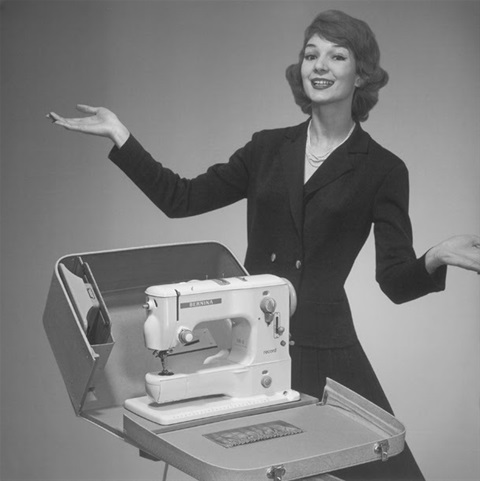YOU HAVE ME IN STITCHES!
For me getting that limp piece of thread successfully through the eye of a needle was always challenging, time consuming and more than frustrating especially when I was constantly left hanging!
I was, have been and still am rubbish at sewing and never seemed to master any of the techniques a sewing machine has on offer to reach that ultimate goal and produce something I could announce with pride ‘I made that!’
My rubbish coordination subsequently resulted in me stitching my fingers onto the material and just producing a mess which made me step away from this great invention and return to be an observer! In truth I had not being paying attention to what I was sewing or monitoring how close my fingers were to the machine's needle simply getting carried away with applying maximum pressure on the foot pedal to see how fast it would go!
Sewing can be a dangerous experience! Sewing machines move at a high rate of speed, setting the stage for several types of accidents to happen. It’s also an activity that involves a lot of sharp, pointy objects that can be dangerous if not handled with care.
Fulfilling? Worthy of that feeling of accomplishment? It boasts gratifying results and while it may require a bit of a learning curve if you are starting out in sewing, the end product is one of practicality and gorgeousness which is more than can be said about some particular past times like gaining the next weapon of destruction on Fornite!
Still, it is wise to consider the potential dangers, as there are with many things in life, that are probably both inevitable and yet still avoidable. The two most common in addition to stitching your fingers to the material have been;
Bulb Burn – Most modern machines do not usually have this problem. Many people who use the older models do so due to their superior quality, but safety standards have changed a lot since most of the sturdy, old machines were produced. The light bulb located under the arm of these older machines can get extremely hot. It is not difficult to accidental brush your arm against the bulb, causing severe burns.
Flying Debris - As the needle in the sewing machine moves through fabrics of different thicknesses and strengths, it weakens. It is commonplace for needles to break once they have been used repeatedly. The danger here is that the broken end of the needle can be hurled at you at the speed it was moving when it broke off.
I vividly remember my mum who still sews whipping up items of clothing and having endless patterns resulting in me and my sister wearing the latest crazy Clothkit pattern as we grew up!
So even though a true sewing novice it does not stop me from appreciating the limitless opportunities having a sewing machine brings along with the freedom to whip up a top or shortened a skirt!
By owning a sewing machine, you can create just about any kind of clothing or home décor letting that creativity literally take shape!
Therefore, I feel the need to share the upcoming day that celebrates how important the sewing machine is in our daily lives without us even knowing it and we take so much for granted to where the clothes in our wardrobes began their lives! So, over a cuppa and a hobknob stop and ponder for a moment on the 13th and spare a thought for this exceptional invention that has changed all our lives!
National Sewing Machine Day on June 13th celebrates the invention and creation of this device, and all those who over the years have produced them improving them over the years and making it so anyone (apart from me) can pick up the age-old art of sewing. It is hard to imagine having to sew things together by hand, stitch by stitch. (Although this is something I would never dwell on too much having only demonstrated my sewing ability to sew on buttons!).
So, who is responsible for such an invention?
In 1755 Charles Frederick Wiesenthal identified and created a miraculous device that took all the labour out of sewing by hand by creating the idea of a double pointed needle with an eye at an end. However, it wasn’t until 1790 that a skilled cabinet-maker English inventor Thomas Saint applied for the first sewing machine patent and the true revolution in sewing was conceived. Regrettably the design for Thomas’s sewing machine was never taken any further and failed to be properly introduced to the world. It was one intended for leather and canvas, was never advertised and there was no evidence of it, other than his drawings.
By 1829, French tailor Barthélemy Thimonnier had done it– the first practical sewing machine was built and successfully marketed. Over the next hundred-or-so-years, the sewing machine underwent constant improvements and changes
Sewing and clothing production became more industrialised taking place less in the home and more in large factories. Industrial sewing machines, in combination with the cotton gin, the spinning jenny, and the steam engine, made clothing production much easier and much cheaper. People could now afford to buy more clothing more often.
From that point forward the development of the sewing machine has advanced with high power surges and programmable embroidery machines filling every possible niche in the sewing world.
Perhaps if you’ve never sewn a stitch in your life, now is the time to finally pick up a trade that will be useful?
Beg, borrow, buy, or rent a sewing machine and start putting needle to thread. Who knows, you may have found your new passion in life and let’s see the funny side – you will always be in stitches!
